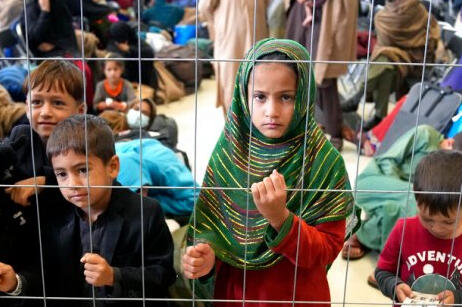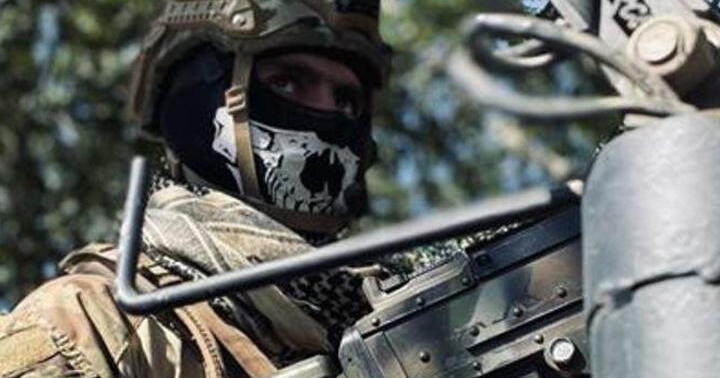How it came to be:
Afghanistan-Taliban History
While the world was shook with the frantic exodus out of Afghanistan due to the arrival of the Taliban group and the subsequent retreat of the United State of America’s (USA) military forces, it was still way back in April 14, 2021 when US President Joe Biden announced the end of their participation in the Afghanistan war. He declared that the US “cannot continue the cycle of extending or expanding [their] military presence in Afghanistan''.
This withdrawal would lead to mass panic, yet Biden maintained that the US had only taken up the Afghanistan War to “get those who attacked us on September 11th, 2001, and make sure al Qaeda could not use Afghanistan as a base from which to attack us again.” This act of terrorism in New York (and by extension: Washington and Pennsylvania) was the reason behind Former US President George Bush’s decision to sign a joint resolution (Council on Foreign Relations or CFR, 2021).
The said document, which was signed nine days after the Twin Towers’ collapse, invoked its rights to self-defense and its duty to protect its citizens, whether in or out the country, in light of the threat to national security brought by the terrorist group. (107th Congress, 2001).
Marking its ten-year journey in 2011, the US finally reached one of the war’s goals which is to kill Osama bin Laden, the al-Qaeda leader responsible for the 9/11 attacks and the “primary target for a war that started ten years ago” (CFR, 2021).
However, the war still persisted. Peace talks were reduced to nothing but mere words without action. 20 gruesome years passed, and yet the day where Afghanistan saw peace was still nowhere to be seen.
Who are the Taliban? Created during the year 1994, the group aimed to propagate their own idea of Islamic law and reject the ideas of the foreigner; The members being Islamic Guerilla fighters who resisted the Soviet Invasion in Afghanistan (Hollingsworth, 2021). They kept themselves afloat through ‘Afghan Opium’ trade as one of their main sources of income (Al Jazeera, 2021) as well as extortion rackets to timber trafficking, artisanal mining, or kidnapping schemes for almost two decades (Henney, 2021).
The Taliban has two factions: Afghanistan and Pakistan, both with different perspectives yet aiming for the same goal (The Taliban’s Goals, 2013). The Taliban-Pakistan's goal is to boast more of their deed, while the Taliban in Afghanistan prefer to reign through conflict to damage their nation. (The Taliban’s Goals, 2013). The initial goal of the Afghanistan-Taliban was to help Afghan refugees from the Soviet Union, which was supported in the early Post-Soviet period after four years (1992-1996) (What Is the Taliban? The Purpose of the Taliban, 2021). However, through the years, the Taliban, both Pakistan and Afghanistan, decided to aspire for power, but in different ways. (The Taliban’s Goals, 2013)
Focusing on the Afghanistan-Taliban motive, According to Park, 2013, their main goal for power was to disarm Afghanistan and create a warzone ruled by Islamic Law, which used offensive tactics such as civilian massacres, terrorist attacks, forced eviction, and torture. Gradually, they were trying to overtake most cities in Afghanistan. In 1996, the Taliban together with Mullah Mohammed Omar declared Afghanistan as an Islamic Emirate – which some researchers say as the most centralised government system enforced in Afghanistan (What Is an Islamic Emirate?, n.d.). Omar led the emir al-Mu’minin. It means commander of the faithful or basically the Taliban’s leader at the start of their regime. As of the recent news, the new taliban commander ‘Abdul Ghana Baradar’ has been declared as the new President of Afghanistan when the Afghan President ‘Ashraf Ghani’ left the country when Taliban fighters took over (WION Web Team, n.d.).

Afghans have suffered for years under the threat of violence, of natural disasters and of poverty. Nearly 550,000 were displaced as of september 2021, while nearly 3 million had been displaced by the end of the year 2020.
Many refugees fled Afghanistan after the Taliban took control of the city on August 14, US forces and coalition partners evacuated more than 123,000 civilians, but it's unknown how many of them were Afghan nationals. According to the US, approximately 80,000 individuals were flown out of Kabul, with around 5,500 of them being Americans and more than 73,500 being Afghans or other foreign countries. Whereas the UK Ministry of Defence said it had flown out more than 15,000 people, 8,000 of whom were Afghans, the evacuations ended on August 28,2021.
However, despite this statement there were women in other parts of Afghanistan who were told to stay at home until further notice and some were too afraid to complain. Driving was also strictly prohibited except for areas like Saudi Arabia where women's rights are constantly used.
People fear for their future. One telephone interview with Ahmad and his sister told the news how they were already trying to learn how to navigate the new Afghanistan.“Our life just two weeks ago seems 10 years away,” he said. “For 20 years the U.S. lied to us and said: ‘We are with you. We will not leave the Afghan people.’ Who is with us now? Only the Taliban.”
Afghanistan had the world's second highest maternal mortality rate and one of the highest newborn mortality rates during the previous Taliban era. “We will almost probably witness an increase in mortality and reversals in gender equality,” Doctor Neha Singh, Professor Susannah Mayhew, Doctor Natasha Howard, and their Afghan connections predicted.
References:
107th Congress. (2001). Authorization for Use of Military Force. U.S. Government Printing Office. https://www.govinfo.gov/content/pkg/PLAW-107publ40/html/PLAW-107publ40.htm
Afghan siblings recount the perils of the first day of Taliban rule. Retrieved from: https://www.nytimes.com/2021/09/01/world/asia/taliban-kabul-scenes.html
Al Jazeera. (2021, August 16). Opium: Afghanistan’s drug trade that helped fuel the Taliban. Al Jazeera. https://www.aljazeera.com/economy/2021/8/16/opium-afghanistans-illicit-drug-trade-that-helped-fuel-taliban
Biden, J. (2021a). Remarks by President Biden on Afghanistan. The White House. https://www.whitehouse.gov/briefing-room/speeches-remarks/2021/08/16/remarks-by-president-biden-on-afghanistan/
Biden, J. (2021b). Remarks by President Biden on the Way Forward in Afghanistan. The White House. https://www.whitehouse.gov/briefing-room/speeches-remarks/2021/04/14/remarks-by-president-biden-on-the-way-forward-in-afghanistan/
Council on Foreign Relations. (n.d.). The U.S. War in Afghanistan. Retrieved September 4, 2021, from https://www.cfr.org/timeline/us-war-afghanistan
Henney, M. (2021, August 20). Where does the Taliban get its money and who’s funding the militant group in Afghanistan? Fox Business. https://www.foxbusiness.com/politics/taliban-afghanistan-funding-sources
The Taliban’s Goals. (2013, February 21). https://afghanistand.wordpress.com/joshs-group/talibans-goals/
UNHCR. (2021). Where are Afghan Refugees going? Retrieved from: https://www.unrefugees.org/news/where-are-afghan-refugees-going/
What is an Islamic Emirate? (n.d.). Retrieved August 29, 2021, from https://tolonews.com/afghanistan-170714
What is the Taliban? The purpose of the Taliban. (2021, April 20). https://www.rafand.org/
WION Web Team. (n.d.). Who is Abdul Ghani Baradar, the Taliban leader who may become new Afghanistan president? WION. Retrieved August 29, 2021, from https://www.wionews.com/south-asia/who-is-abdul-ghani-baradar-the-taliban-leader-who-may-become-new-afghanistan-president-405982
